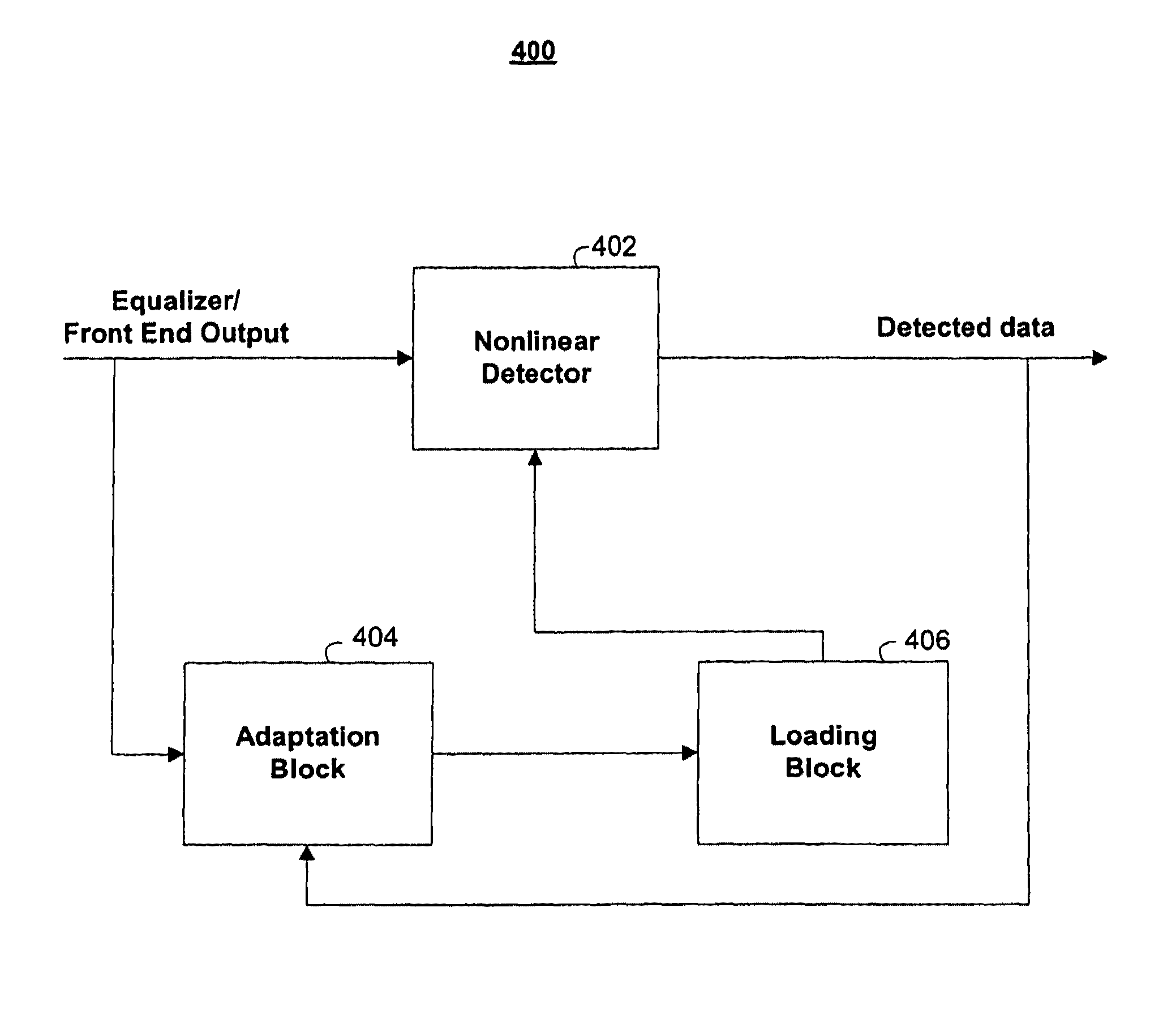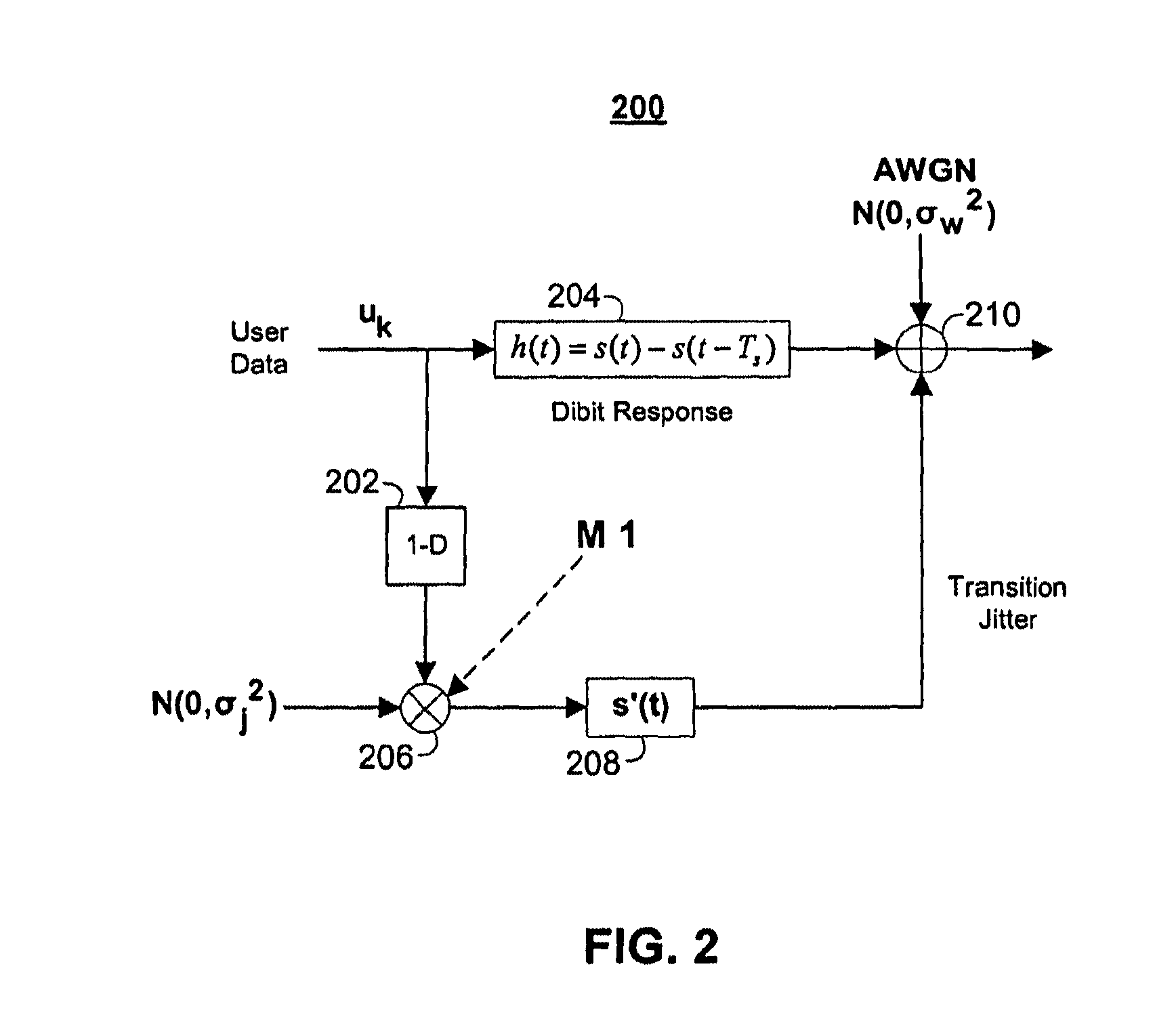Nonlinear detectors for channels with signal-dependent noise
a detector and channel technology, applied in the field of detecting communication signals containing signal-dependent noise, can solve the problems of limited coercivity of the media, limited signal processing and detection of recording channels, and limit the size of data bits, so as to maximize the conditional probability of the detector's input signal
- Summary
- Abstract
- Description
- Claims
- Application Information
AI Technical Summary
Benefits of technology
Problems solved by technology
Method used
Image
Examples
Embodiment Construction
[0030]Embodiments of the present invention relate to apparatus and methods for detecting data signals, particularly magnetic recording channel data signals. However, the present invention may be used to detect a signal from any communication channel in which there is signal-dependent noise, such as optical and magneto-optical channels.
[0031]FIG. 1 depicts a simplified block diagram of illustrative noise model 100 for a typical recording channel. User data (perhaps selected from the set {+1, −1}) may be converted to the form of signed NRZI by block 102 resulting in data signal bk. This signal may indicate whether there is a transition in the data signal and also the polarity of the transition, if it exists. Noise in the form of transition jitter may then be added to the signal at block 104, where the transition jitter, Δk, may be modeled by a noise process Nj having a mean of 0 and a standard deviation of σj. This signal may then be applied to the channel step response s(t) at block ...
PUM
 Login to view more
Login to view more Abstract
Description
Claims
Application Information
 Login to view more
Login to view more - R&D Engineer
- R&D Manager
- IP Professional
- Industry Leading Data Capabilities
- Powerful AI technology
- Patent DNA Extraction
Browse by: Latest US Patents, China's latest patents, Technical Efficacy Thesaurus, Application Domain, Technology Topic.
© 2024 PatSnap. All rights reserved.Legal|Privacy policy|Modern Slavery Act Transparency Statement|Sitemap



